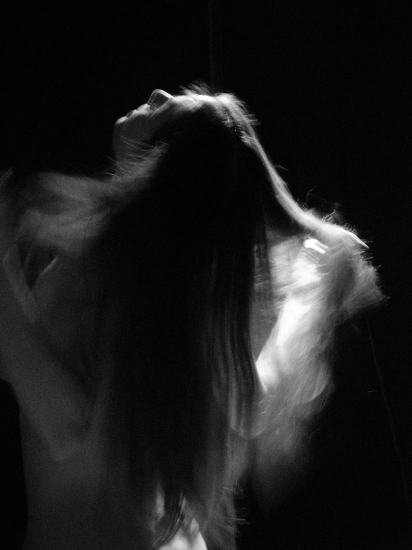"Anyone who listens to an artist needs their eyes examined" -Claus Oldenburg
send us an email
You can track this page with firefox add-ons
| current
issue submissions contact archive 180 studio 180 forum |
Cool Links |
my soundtrack: folkradio.co.uk Kim Taylor my workshops: 180 photo workshops my daily photo fix: Flak Photo |
blog
archive
|

Here's a bit of fun, Saachi and the Times are running a vote to develop the top 200 list of artists of the 20th century. You'll find the list here:
http://entertainment.timesonline.co.uk/tol/arts_and_entertainment/visual_arts/article5700435.ece
Have a look and see how many artists you can spot. I started to go through the list to pick out all the photographers but gave up due to lack of time to do it.
Have a look and see how you do on your artist recognition powers. Can you pick out all the photographers at least?
I couldn't.
In 180 magazine we like to showcase photographic stories, or series of work. We do this because we want our readers to see a consistent set of images from each photographer. Depth rather than breadth.
Who shoots in series? Fashion photographers, fine art photographers, documentary photographers, journalists, sports photographers, wedding photographers, senior portrait and school photographers and Mom and Pop (think of their "our kids" series that they have been working on for many years).
If you take photographs you might want to seriously consider working in a series of shots. It will get you away from thinking about a single image, take you away from copying other images and provide a framework to work within. It is often useful to explore a subject in detail rather than simply shooting anything that catches your eye.
A series is simply a set of inter-related shots. The series type most familiar to people today might be the fashion editorial. In an earlier age the most commonly recognized series would likely have been the photo-magazine story from such publications as Life, Look and Picture Post.
A series can be related by a common physical feature such as a river, a road or a town. It could be related by a common theme or idea such as a sport like baseball, or images of dancers. There may be a common visual motif such as a dominant colour or a unique point of view. Images could be related in time, such as the shots created by Eadweard Muybridge, or the shots Sally Mann has done of her family over the years.
Images in series may be related by such abstract ideas as strong diagonal composition or by typology as in the houses or industrial buildings of Bernd and Hilla Becher. The beach portraits of Reineke Dijkstra are an excellent example of portraiture done in series, and not much different in their physical setup from a set of senior portraits, although their emotional impact is certainly not the same.
With digital technology it is easy to do an immediate series of shots, digital media is cheap and once the camera is in your hands there is nothing to stop you from taking dozens of pictures of any particular subject.
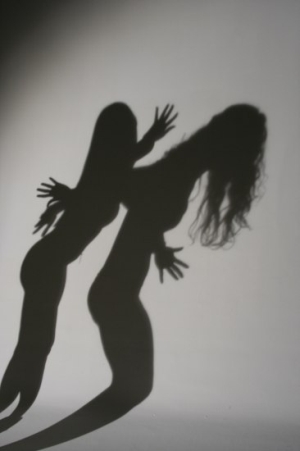 |
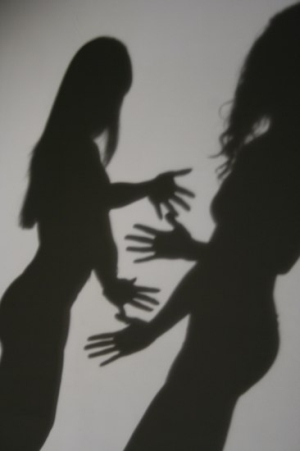 |
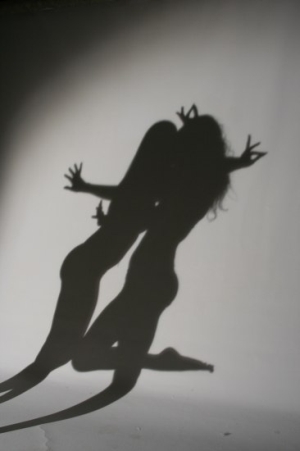 |
This series of shadows isn't a particularly strong one, and something like this wouldn't necessarily deserve more than three images as presented here. It certainly wouldn't make a story unless there was much more happening. This is actually just a set of shots out of which I would expect to find one or two images. No story was being developed, the models were simply making shapes and having fun.
Series that extend over many years are a bit harder to create but they are also worthwhile and should be considered.
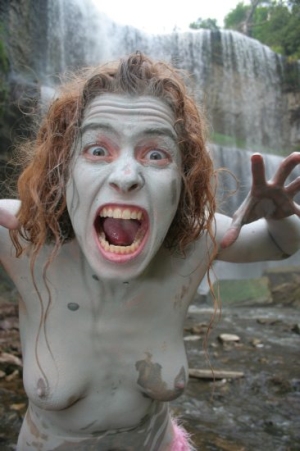 |
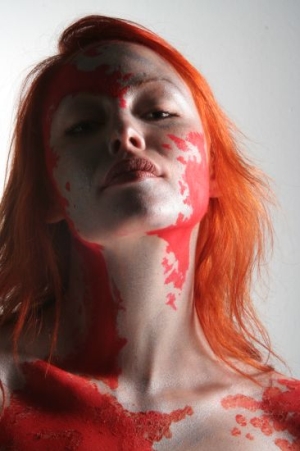 |
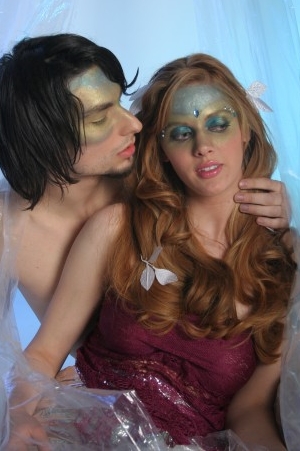 |
These shots are part of a multi-year series I have been working on which looks at all the different types of mask that we might put on. Eventually it will (and does) include much more than pigment on skin but here are three somewhat related shots from three different years. From the left we have mud applied from a riverbank, paint applied by an artist and makeup applied by a cosmetic artist. In this case the images aren't particularly suited for display side by side but would probably work nicely in a multi-page story with a little separation one from the other.
I had an interview with a former model who was interested in doing some figure work after being out of the business for a few years. She seemed quite enthusiastic after our chat but a couple days later, emailed to say that she had changed her mind. She had remembered that she quit the modeling business because of the emphasis on body image and she didn't think she should put herself in that situation again.
Fair enough, I have talked to more than one former model who quit for the very same reason. The constant quest to stay thin enough to satisfy the industry takes its toll on everyone I'm sure. In fact I'm starting to get quite tired of the new faces I see on some of the modeling blogs I read. I'm not against thin girls but these kids are not only thin, but interchangeable, the new ones look exactly like the old ones and I'm looking forward to a change in "look".
On the other hand, my experience with figure models has been a bit different than the fashion model story. While fashion models go eagerly into the business and become tired of the body image concerns, or become body-conscious themselves while in front of the camera, I have found that many figure models come to the shoot with body image problems and work them out while under the lights.
It's not the camera, the photography or the images that are the problem, really, it's the acceptance of our bodies as they are. Not everyone is the currently popular shape for a fashion model, but everyone can discover that they look good. The fashion model may start out with the "ideal shape" and be the envy of those who aren't, but that model grows up and perhaps at 20 begins to realize that she isn't going to have that ideal shape forever. Thus the problem with self-image. With a bit more age and the chance to "get a life" they usually manage to come to acceptance.
The "normal" girl on the other hand, may have a problem with not looking like the fashion model, but can come to acceptance of themselves and their bodies by seeing how wonderful they can look as they are. The idea that they have to be some sort of sexy beast in a men's magazine or the svelt clothes hanger on the runway can give way to an admiration of their own shape and perhaps more importantly, of their comfort, finally, with themselves naked and exposed to the gaze of the camera (and photographer) and those who admire the images created during the shoot.
Now I hasten to say that I don't shoot figure work to be a therapist and most of my models don't work with me because they have self- or body-image problems. I just find it interesting that some women can develop problems while being models, while others can solve them.
My tall thin daughter's take on all this? "Why can't people be models because they want to be models?"
Good point.
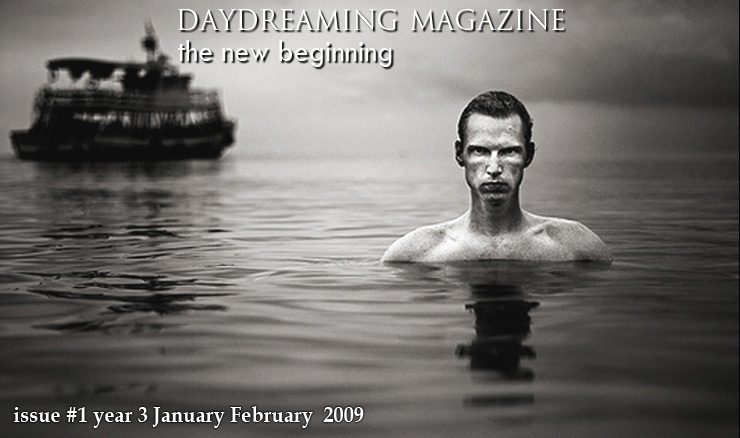
DAYDREAMING ( www.ddmagazine.it) is an online magazine founded in 2007 in Trieste (Italy) and exclusively dedicated to the creative image its many forms.
Its aim, born from a precise editorial choice, is collecting and exhibiting the work of visual artists in a pure form. Presenting it simply as data itself: no artist bio, no critical analysis of the works, no extra info that could in any way distract from the innediate impact the work has on the watcher.
DAYDREAMING MAGAZINE -The New
Beginning-
is online at:
http://www.ddmagazine.it/2009/numeri.2009/01gen/01gen.html
First 2009 issue of DDMagazine is
online. A kind of "new beginning" that brings more fluency
and some graphical improvements (thaks to Emilio), together with great
stuff from...
TOM HOOPS (photography - UK-ASIA)
ARCHAN NAIR (photoillustration - INDIA)
DIEGO IAFCONCIC (paint - ITALIA)
MATTEO NAZZARI (photography - ITALIA)
MARIO MACALUSO (photography - ITALIA)
Remember that you can find further informations about each author in
the portfolio section of the magazine:
http://www.ddmagazine.it/potfolio.htm
Mail to:
staff@ddmagazine.it
Enjoy
DayDreaming STAFF
My mother and grandmother made me sweaters, my other grandmother once knitted me a pair of slippers. Those were all great and my daughter now wears most of them. Make me a photograph of the feeling I have when I see my daughter wearing one of my sweaters made for me by my grandmother.
The clothing I no longer have because I wore them out are the shirts, and even a down coat that various girlfriends made me through the years.
Make me an image, create for me a photograph that gives me the same feeling that I had when I wore that shirt or that coat, a feeling I had even years after the girl left me.
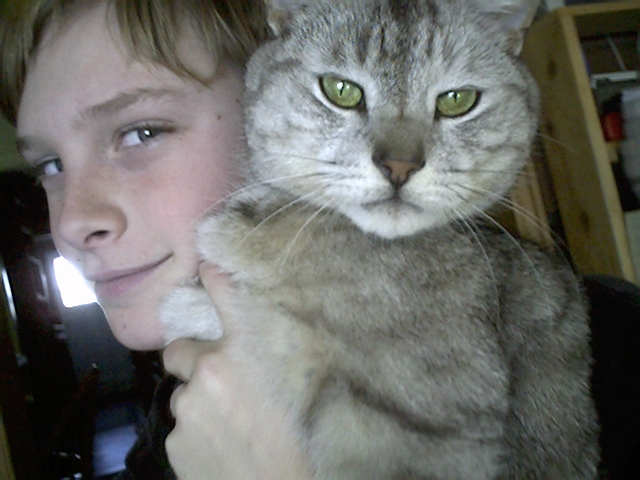
Cats and kids don't do it. They're a whole other set of emotions, ones manipulated for so long by the greeting card companies and Television that they seem, unhappily, trite. We all know what we're supposed to feel when seeing something like this... Awwwwww. This is as emotional as most photographs get I'm afraid.
But there are deeper emotions, more subtle.
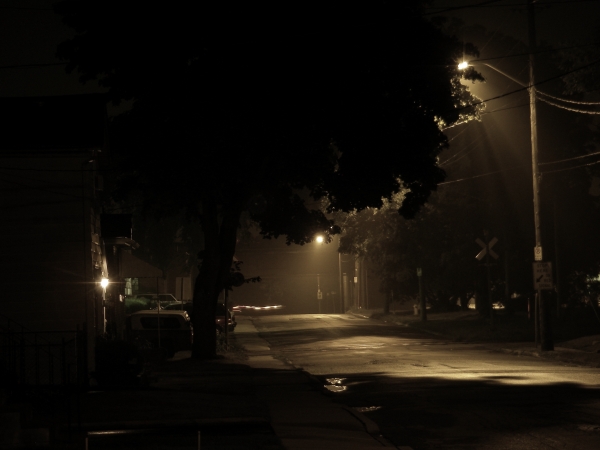
This image is a bit closer to the feeling. I come from South-West Ontario, down by Lake Erie and on deep summer evenings during school vacation the humidity would approach 100 percent. The cicadas would be buzzing in the trees and every streetlight would have a halo. The town was mostly dark with pools of light beneath each lamp. Looking at this shot I can smell the air, heavy with lilac and water. I can hear the train whistle floating across the gully through the screen door to the second floor porch. I can see the car lights move across my bedroom wall, first one way and then the other as the cars turn the corner of the street. We were down a gravel footpath so the cars never came by our house.
This shot is close to making me a shirt, but it's specific to me, those not from SW Ontario may not recognize the rare feeling of those long days and warm evenings in a place that was mostly cold and hard and hungry.
A shirt made by a girlfriend is a rare thing, a precious thing, a deep thing that goes beyond any fleeting emotional storms. This is something that took time to make, created with her hands to keep the sun and the wind off your back. No matter what else happens in that relationship the feeling of getting that shirt will remain exactly as it was when she handed it to you with hope in her eyes that you will like it.
Make me that photograph. Make me that shirt.
At the open studio session last evening an old friend suggested that I wouldn't be getting tired any time soon of shooting all the models.
Without thinking I said "you'd be surprised".
Irving Penn supposedly said that he much preferred photographing plastic manniquins to the real-life fashion manniquins he worked with because they did as they were told and didn't move around.
I probably have a few tens of thousands of figure shots on my disks with many dozens of models, so I've seen pretty much what there is to see of both women and men. I suppose I am getting a bit saturated with the work I've been doing in the last few years, usually a couple shoots a week. Yet I continue.
Is it habit or am I still seeing something new, learning something interesting each time I pick up the camera? Hard to say, but I suspect that just like my sword practice, my photographic practice has a few more flat parts to go before I get wherever it is I'm going.
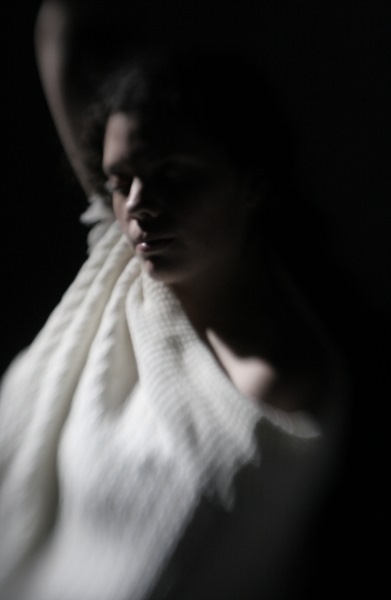
In the meantime I think I like this shot that I grabbed off the modeling light while folks were shooting.
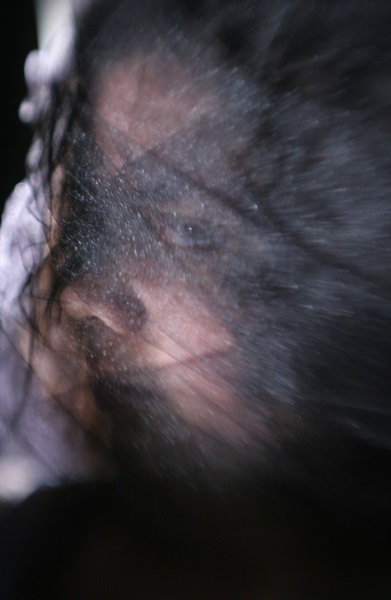
This one is growing on me too.
For 2009 I thought that I would make a gift to you readers of a photo from my current 180 stories. These will be in jpg form, 300dpi sized to print on 8.5x11 paper so you can print it on your desktop printer. The story is at http://180mag.ca/0902/taylor/taylor.html
Click on the image to bring up the full size file which you can then save and print. If you do download and print it, drop me a line to say hello and tell me how it looks and how you used/displayed it.
Here's the shot:
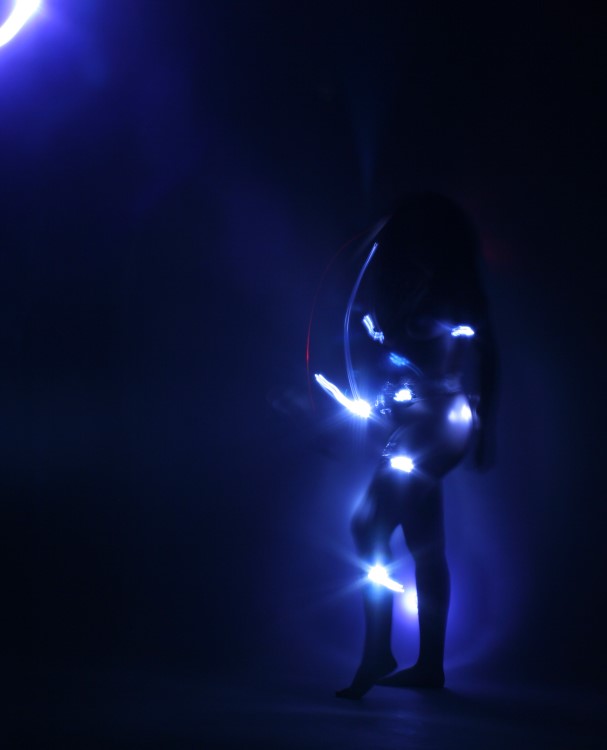
So, are you a lawyer or an artist? Let's do a little thought experiment.
Someone points out that there is a poster out there that is very popular, lots of folks are using it, selling it, making money off of it. It's based on a photograph you took.
You look and yes indeed, it's one of yours, so what is your first thought?
1. I've got to get some money for this, I've got to assert all the copyright I can and get in on this.
2. Cool, nice illustration, good work off my shot.
Alright, let's take the money out of it, that confuses everything. Let's just say the fellow gets famous but not rich off the modification of your shot.
Is the main thing that you get full credit, that you get whatever cash you can from the guy, or is the main thing that art and creativity moves forward, whether or not you get credit for it?
The answer is easy for me, I teach so I put everything I can do out there, the best I've got, and I expect folks to move forward with it and do better than I did.
If they don't I'm a crappy teacher.
Mr. Murphy was working hard today. I was to be working with a couple of models and an artist on some body painting. The artist had a job interview and couldn't attend. One of the models was supposed to come later and I meant to warn her not to bother but my schedule got messed up by a missing Monday (on a plane back from Vancouver) so I woke up this morning thinking I was going to hit the gym. A bit later and more awake, I remembered that I had two models coming at different times, one of which I needed to pick up, and I had not confirmed with either of them.
Quick emails and a phone call confirmed the first model so we headed to the studio with high hopes of a good morning's work.
Once there I pulled out my rusty old Rebel and realized that I had left the switch in the on postion which, on this poor old dear, means the batteries were dead. Of course the charger was at home, and of course my backup camera is out on loan.
Putting the radio trigger away I resigned myself to doing the session with my point and shoot and was further delighted to remember that our lone Mohl-Richardson fresnel hot-light has a burned out bulb and I can't get the lens off.
Good thing the Speedos have modeling lights. I set them up for some line and form shots against the black wall.
I set the Pentax point and shoot to iso800 (the right amount of "grain" to my eye), pan focus (too slow to focus so I set it to its fixed focus), cranked the EV down a couple of stops (the auto exposure would mean a blown out model against the black background), and set the mode to text (black and white with a lot of contrast) so I didn't have to worry about colour balance. The flash is never on of course.
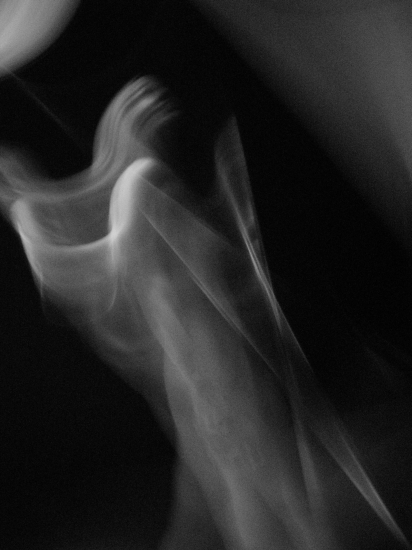
I won't bother with telling you all the other things that were going wrong. Suffice to say I just put my head down and got on with it, as did the model and Murphy came up with a couple of shots.
